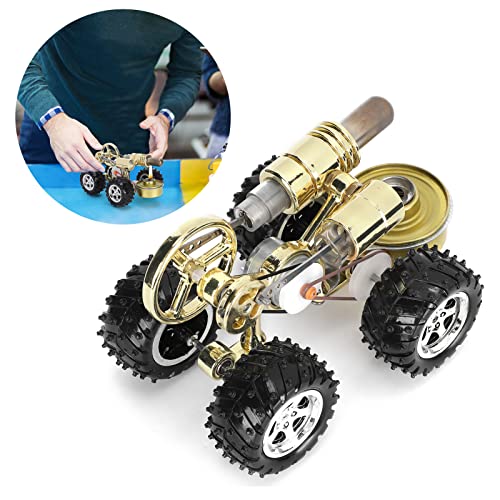I would recommend not making a copy of a 3D model, but rather create the model like you have done, which is to some extent the "as-machined" state of the engine, and then add features, such as machining allowances, and perhaps core prints.
The features can easily be suppressed in the model, to get it back to an "as-machined" state, which is what is used to derive 2D drawings.
Turn on the features if you are going to print a 3D printed pattern.
One thing missing from your model that will cause a lot of sand mold problems is fillets in the corners, and at the plane intersections.
I generally make the fillets a part of the "as-machined" 3D model.
I generally don't add fillets until the 3D model is completed and checked, because fillets will often malfunction if changes are made to the base shapes of the model.
From a casting strength standpoint, you don't want any sharp corners/intersections, since this is a stress concentration point.
You can get away with some lack of draft angle if bound sand is used.
As JasonB mentions, you can sometimes use the pattern itself as a corebox, if you add the coreprint parts to the pattern.
Coreprints would also be a feature in the model that would be suppressed as desired.
The coreprints are projections into the main mold which support the cores.
Some of the more exotic methods could be used to cast the parts, such as lost PLA, but with bound sand, you would not need an investment process (in my opinion).
Some situations may require retracts, or loose pattern pieces, such as the crosshead guides.
And as I mentioned, I create the 3D model at 1:1, and then scale the entire 3D model down in the slicer program (not in the 3D program). The shrinkage factor is added to the slicer scale, for example, if you 3D print your model at 1/2 scale, then a 12" long piece is scaled to 6" in the slicer, plus a scale factor of about 1.015 for shrinkage.
So the 3D printed part is about 6.09" long, and the casting should end up about 6" long.
The notes from the person who made the Merlin castings indicated that you many not always get the exact shrinkage in every casting, and he mentioned some alignment issues.
Larger castings are more tolerant of dimensional deviations from casting to casting, since you have more room for error.
I would recommend not adding draft to any surface that does not need draft; ie: don't fix things that are not broken.
The foundry and/or you need to determine pull directions, parting lines, etc.
The draft angle generally goes up to the parting line, and is not necessarily symmetrical in both directions.
Find the parting line before you do draft angles, if you choose to include draft angle in the model.
My first 3D printed patterns did not have draft angle, and I manually added machining allowance and draft angle.
I have since learned to incorporate draft angle into the 3D printed patterns, and while it is a bit more work, it is easier for me than manually adding draft to a 3D printed pattern later.
And the bonus of having draft angle incorporated into the 3D model is if you need to re-print a pattern for some reason (modifications, etc.), you don't have to repeat the manual draft angle work using fillers.
That the Y-shaped part of your frame is very similar to the Speedy Twin frame, and I have photos of the corebox and pattern for that if you want to see how they did it at the Soule factory.
Another reason to create the 3D model at 1:1 is that you can reproduce the original drawings for the engine.
This is the approach I am using for the Speedy Twin 3D model, and this will allow me to give the Soule museum an accurate full sized set of Speedy Twin drawings, which they don't currently have.
.
Edit 01:
Post #9 in this thread is an example of the first 3D printed pattern I made, which I then filled manually after printing.
These days I add the filling into the 3D model.
https://www.homemodelenginemachinis...engine-drawings-and-stp-files-by-pat-j.34335/
Some corebox and pattern shapes that resemble the frame in this thread can be found here:
https://www.homemodelenginemachinis...reprints-parting-lines-etc.36378/#post-416058
.









![DreamPlan Home Design and Landscaping Software Free for Windows [PC Download]](https://m.media-amazon.com/images/I/51kvZH2dVLL._SL500_.jpg)































![MeshMagic 3D Free 3D Modeling Software [Download]](https://m.media-amazon.com/images/I/B1U+p8ewjGS._SL500_.png)




























































